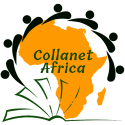This paper is intended to equip the candidate with knowledge, skills and attitudes that will enable him/her to apply information communication technology effectively in solving business problems, decision making and in adapting to new working environments.
LEARNING OUTCOMES
A candidate who passes this paper should be able to:
- Demonstrate proficiency in decision making using contemporary information communication technology tools
- Use various application packages to solve business issues
- Use data communication networks, the Internet and e-commerce in optimising business opportunities
- Apply data security measures and procedures
- Implement information systems legal, ethical and social issues.
Downloads
Course Syllabus
- Introduction to information communication technology (ICT)
- Introduction to information communication technology
- Computer hardware
- Computer software
- Programming languages and tools
- Information systems personnel and hierarchy
- Role of ICT in business environments
- Information centres
- Impact of ICT in business
- Overview of operating systems
- Overview of an operating system
- Functions of an operating system
- Types of operating systems
- Computer booting
- Selection and acquisition of operating systems
- An overview of application packages
- Word processing
- Features of a word processor
- Formatting and editing text
- Creating and formatting tables
- Spreadsheets
- Features of a spreadsheet program
- Formatting and editing spreadsheet
- Formulas
- Functions; sum, average, min, max, IPMT, NPV,PMT,PV, VLOOKUP, HLOOKUP, COUNT, IF, sumif
- Charts and graphs
- Working with pivot tables
- Linking formulas in different worksheets
- What if analysis; Goal seek and solver
- Presentation software
- Features of a presentation program
- Typing and formatting text in slide
- Slide show
- Computerised accounting software
- Capturing data
- Features of accounting software
- Word processing
- Computer networks
- Computer networks concepts
- Computer network hardware and software
- Data transmission media
- Types of computer networks
- Advantages and limitations of networking
- Cloud computing concepts, features and models
- Internet of things (IoT)
- The Internet
- Introduction to the Internet
- Applications of Internet
- Using search engines
- E-mails
- Electronic communication
- Internet services - e-mails, www, instant messaging
- Internet service providers (ISPs)
- Applications of internet
- Online collaborative tools; cloud sheets and cloud documents
- Impact of internet on society
- Data security
- Overview of data security
- Threats and controls
- Data backup and restoration procedures
- Information systems in an enterprise
- Overview of information systems
- Components of an information system
- Types and characteristics of information systems
- Systems in a functional perspective
- Enterprise applications and the business process integration
- E-Commerce
- E-commerce concepts and features
- Models of e-commerce
- Impact of the internet on business
- E-commerce enabling software
- Business opportunities in e-commerce
- E-commerce infrastructure and platforms
- E-commerce payments methods
- Challenges of e-commerce
- Securing e-commerce transactions
- M-commerce and applications
- Digital marketing methods
- Mobile devices and applications
- Overview of mobile computing
- Types of mobile devices
- Uses of mobile devices
- Overview of mobile applications
- Mobile browsers
- Systems analysis and design
- Elements of information systems
- Systems theory
- Types of information systems
- Personnel involved in systems analysis and design
- Systems analysis and design concepts
- Systems development life cycle (SDLC)
- Definition of systems development life cycle
- Phases of SDLC
- Advantages and disadvantages of SDLC
- Requirements elicitation
- Stakeholder analysis
- Need for requirements gathering
- Process for requirements gathering
- Requirements gathering tools and techniques
- Gap analysis
- Prioritisation of requirements
- Legal, ethical and social issues in information systems
- Information systems ethical and social concerns
- The moral dimension of information systems
- The legal issues in information systems
Sample reading and reference material
- Tymann, P., & Reynolds, C. (2008). Schaum's Outline of Principles of Computer Science (Schaum's Outlines. New York: McGraw-Hill.
- Rainer, R. K., & Prince, B. (2020). Introduction to Information Systems (8th Edition). New Jersey: Wiley.
- Vermaat, M. E., Sebok, S. L., Freund, S. M., Campbell, J. T., & Frydenberg, M. (2017). Discovering Computers (2018): Digital Technology, Data, and Devices. Boston: Cengage Learning.
- KASNEB e-learning resources (link on the KASNEB website).
- KASNEB approved study packs.

Login
Accessing this unit requires a login. Please enter your credentials below!



